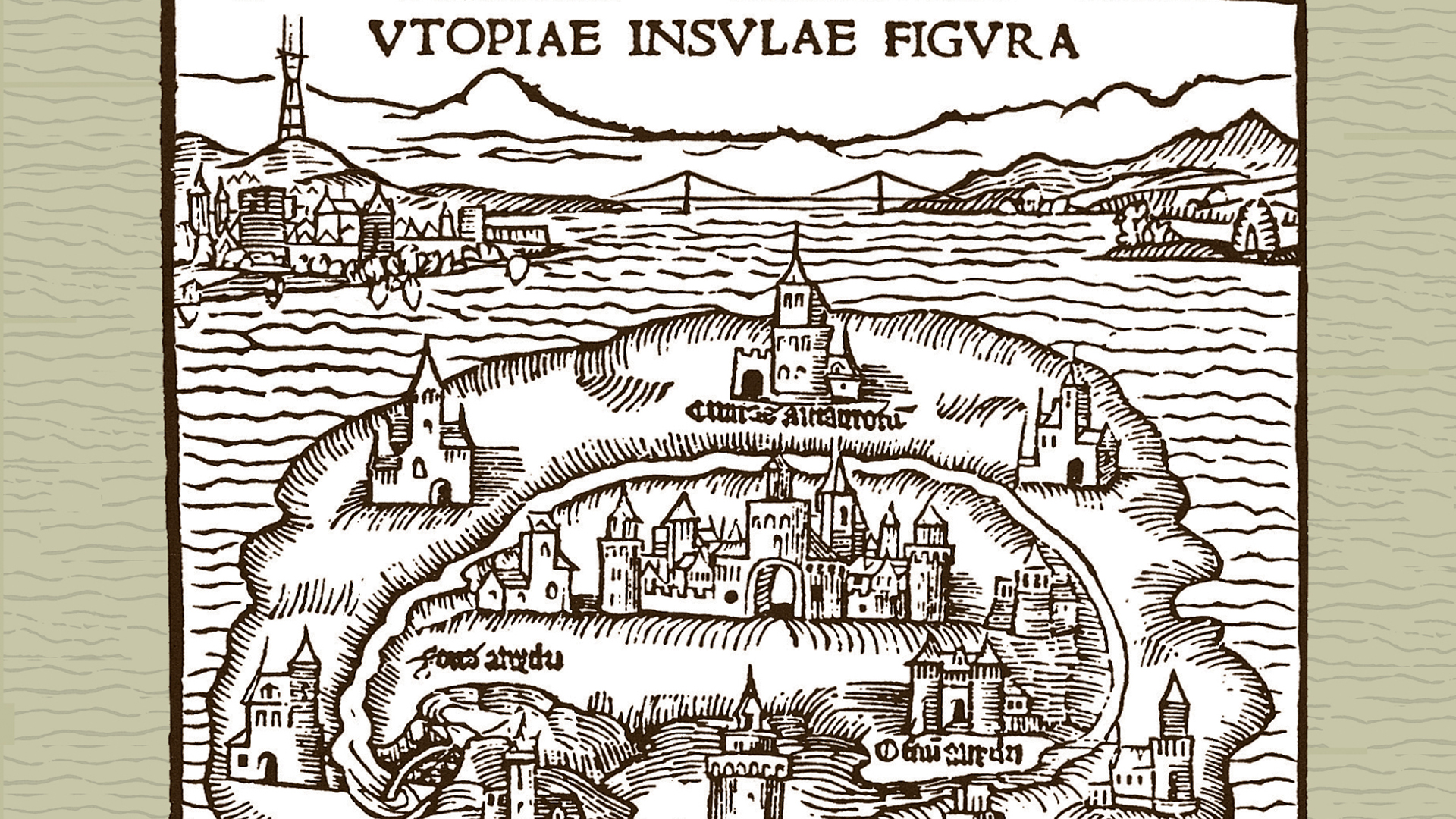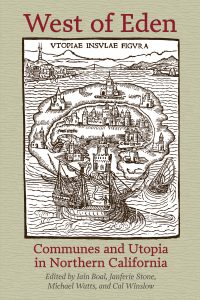By Sara Matthews
Humboldt Journal of Social Relations
Issues 36, 2014
The writing of history has left the American communal and “back-to-the-land” movements of the 1960s largely brushed aside, characterized as little more than the immature petulance of self-indulgent hippies seeking to escape responsibility. The editors of West of Eden: Communes and Utopia in Northern California contend that this portrayal is tinged with political motivations and has thus far succeeded in detracting from any serious inquiry into the subject. With this book, they aim to provide a starting point from which the American communing movements can be contextualized and analyzed in a meaningful way. The editors, historians Iain Boal and Cal Winslow, anthropologist Janferie Stone, and geographer Michael Watts, offer West of Eden to highlight the work of their larger “Communes Project,” a collaboration of the Institute of International Studies at the University of California, Berkeley and the Mendocino Institute. In doing so, they weave together an eclectic collection of essays written by 14 contributing authors (including the four editors) ranging from extensively researched histories to colloquial, first-hand narratives of the commune experience. Taken together, this collection succeeds in familiarizing the reader with the history, political motivations, and nature of the communal movement as it played out in northern California, while also initiating an inquiry into its lasting social and political impacts in contemporary America.
The uniting thread among these essays is a focus on the burgeoning ventures in communal living that took place in the 1960s and 1970s, specifically in northern California. However, beyond this unifying theme, the essays vary greatly in content and style. The extensively researched and well organized exposition and argumentation found in many of the essays such as Jeff Lustig’s “The Counterculture as Commons” or Felicity Scott’s “Bulldozers in Utopia: Open Land, Outlaw Territory, and the Code Wars” can be contrasted, for example, with an excerpt from one of the many personal narratives that Cal Winslow aggregated in his contribution, “The Albion Nation”:
At that time, the SLA [Symbionese Liberation Army], that whole thing was going on. Things were really fractionalizing in the movement. I guess it was when Nixon was in power. I think people were a little disillusioned. The antiwar movement was falling apart. So that’s another piece of it. (p. 162)
The hodgepodge of writing styles and differing levels of biases at times leaves the reader scrambling to choose the correct lens through which to analyze the text. This occasionally results in a confusing read; however, it also one of the book’s strengths.
Because its base-level purpose is to provide a foundation for potential students of the subject, this volume makes good use of the wide range of sources by providing not only history, context, and suggestions on how one might think about the communal projects, but also by providing a window into the primary research from which these conclusions were reached. This results in no t only an engaging read, but also makes the book a convenient starting point for both secondary and primary research.
Another strength of West of Eden is the attention given to the role of differing conceptualizations of space. Multiple essays throughout the book engage with ideas of the reclaiming of space and the spatial relationships between the communing movements. In his recounting of the history of communing movements, Timothy Miller portrays the back-to-the-land movements in the early 1900s as being “solitary spaces” (p. 5). As groups of people relocated to the rural hinterlands, the goal of these movements was to fully support themselves on a plot of land, separate from the urban core.
These solitary-spatial projects, however, quickly found themselves to be unsustainable. Perhaps taking a note from history, the communing movements of the 1960s are found to be much less about discrete spatialization, with much collaboration between the rural and the urban. In introducing the major themes of the book, Boal describes the interaction between the spaces of city and country to be complex and unfit for any sort of dichotomous comparison (p.xiv).
Meanwhile, Lustig’s exploration of the physical and imagined “commons” speaks to the “political scaffolding” left by earlier movements as well as the roles of the open spaces of San Francisco’s Golden Gate Park and UC Berkeley’s campus (p. 35). He argues that the geography of these existing conditions played a critical role in the incubation of collective activity. Scott conceptualizes space in a different way, understanding the creation of communes as “an exodus from official systems of managing land and the built environment—from property rights and trespass laws to building codes as well as health and safety regulation” (p. 58). Through an examination of the legal battles of the “code wars,” Scott illustrates how the reactionary claiming of space was used as an explicit means of challenging the codes of capital’s spatial order. The claiming and reordering of space as means of achieving a political agenda is a reoccurring theme that is handled well throughout the book.
The final essay in West of Eden is a discussion by Watts in which he examines the
collection
of communal movements in relation to the broader upheaval of world
events in the 1960s. He sees these communing and back-to-the-land
movements as being one of many paths that were taken during this time
period in an attempt to construct an alternative world. While these
movements were, by name and nature, communal, Watts argues that they
were also highly individualistic and, in some senses, libertarian. Out
of this, he contends, came of the emergence of not only the New Left
normally associated with the American communing movement, but also the
development of neoconservatives and the New Right.
While the communing movements did not last beyond the 1970s, their legacies are still felt in contemporary America. Today, we still see this “desire to control one’s own life” manifesting in discourse and political contentions across the nation (p.238). As we once again approach what some would call the “crisis of legitimacy for the institutions of capitalist modernity,” the scrutiny of these past communing movements becomes all the more relevant (p. xxiv).
West of Eden accomplishes the task of beginning the excavation of the American communing movements and provides an integral perspective, useful in any attempt to understand the complex political and social culture of northern California, southern Oregon,and, indeed, much of broader contemporary America.
Back to Iain Boal’s Author Page | Back to Janferie Stone’s Author Page | Back to Michael Watts’s Author Page | Back to Cal Winslow’s Author Page







